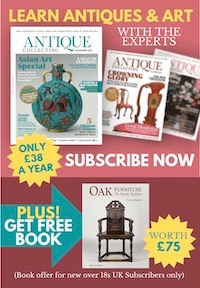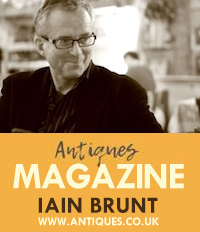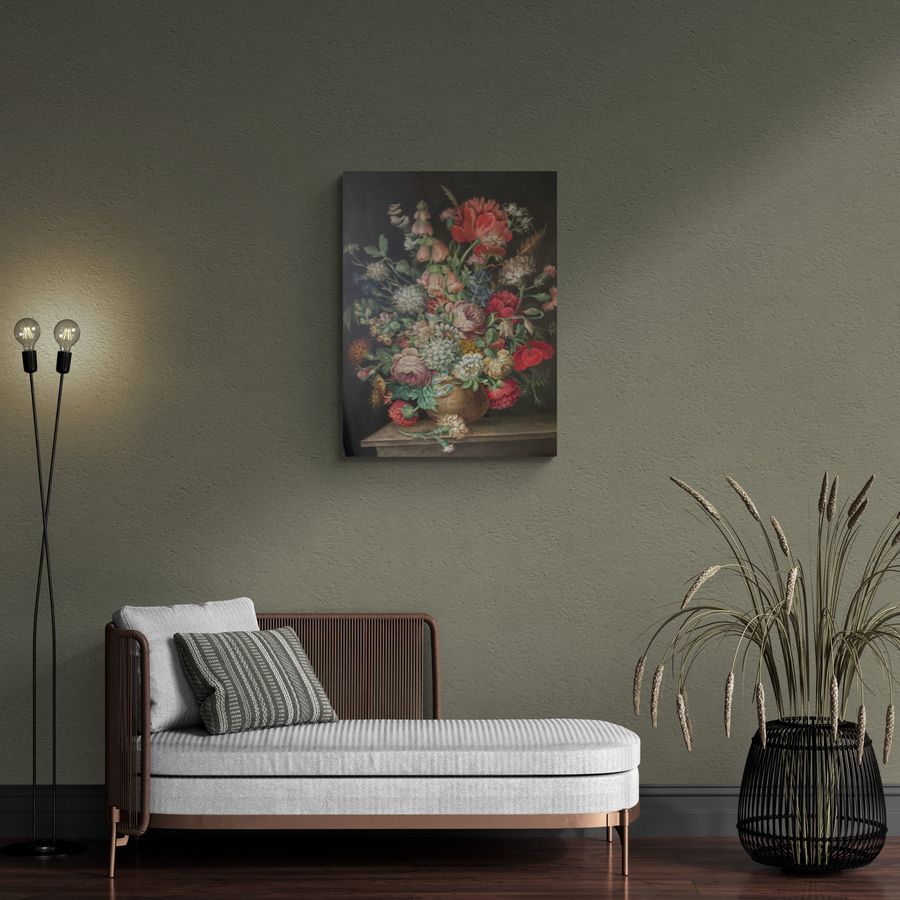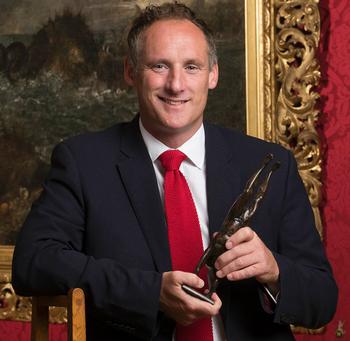LONDON’S HIDDEN GEM.
Posted by Alain Elkann on 13/02/2023
Dr Xavier Bray is the Director of the Wallace Collection, an internationally outstanding museum in central London which contains unsurpassed masterpieces of paintings, sculpture, furniture, arms and armour and porcelain.
Dr Bray, you are a renowned expert in 17th & 18th Century art and since 2016 the Director of one of the finest and most celebrated collections in the world. Can you describe the Wallace Collection?
The Wallace Collection is a treasure house and a time capsule of the kind of art people collected in the 19th Century. It was kept together and never broken up, so when you come here you experience it in its original setting. It consists of all kinds of things, ranging from porcelain, renaissance sculpture, European paintings, arms and armour and Chinese cups of the 18th Century.
What is its special appeal?
You can walk into a house that is yours. It is a national museum and it belongs to the taxpayer. You can come in for free, as if you were the founder, Sir Richard Wallace.
Who was Sir Richard Wallace?
An enigmatic character. He grew up in Paris in the 19th Century and was taken on by the 4th Marquess of Hertford as his private secretary. Together they bought some of the greatest art objects that could be had. To everyone’s surprise Sir Richard inherited everything on the death of the Marquess, and amazingly Richard Wallace decided to be the first ‘keeper’ of the collection, because he could have easily sold it or just kept it to himself. To the contrary, he brought back the collection from Paris to London, acquired Hertford house from the family, and refurbished and restored it. And, perhaps more surprisingly, while this was being done he sent the majority of the collection to the Bethnal Green Museum in the East End of London to be seen by the public. Opening in 1872, the exhibition received 5 million visitors over 2 and a half years, and it was probably its success that inspired him to make a gift to the nation of his collection.
Was he married?
After his father’s death he was married to a lady who worked in a perfumer’s shop. She collected also, mainly jewellery. Lady Wallace died after her husband, so it was she who actually gave his collection to the nation in 1897.
What is included in his collection?
The collection is very diverse. Every piece is of the highest quality. It is a treasure house because a lot of it glistens, from the armour to the gilt bronzes, to the Sèvres porcelain, to the Renaissance sculpture. They bought the best paintings available on the art market in the Paris and London of the 1840s, including ‘The Laughing Cavalier’ by Frans Hals and Rubens’ ‘The Rainbow Landscape’. Richard Wallace worked with the 4th Marquess, a notable collector of his time, and 80% the two collected together. The 3rd Marquess loved Dutch 17th century painting, hence we have a great collection including five magnificent Rembrandts, and also the 3rd Marquess was a friend of King George IV and they collected together. We also have wonderful French 18th Century furniture.
“People don’t know that Henry Moore loved the Wallace and was inspired by the helmets here at the armoury.”

‘Henry Moore: The Helmet Heads’ is at the Wallace Collection from 6th March to 23rd June 2019.
Reproduced by permission of the Henry Moore Foundation. Image © Wallace Collection
What are the icons?
The icons that taxi drivers refer to are ‘The Laughing Cavalier’ and ‘The Swing’ by Fragonard, used in Walt Disney films including ‘Frozen’. Yet we have Titian’s ‘Perseus and Andromeda’ that King Philip II of Spain commissioned from Titian directly. We have two large Canalettos, as good as the Queen’s. We have Rembrandt’s portrait of his son Titus. We also have a very impressive roll top desk made by the cabinet maker to Marie-Antoinette for the Comte d’Orsay, and a very important piece of armour made by Kolman Helmschmid of Augsburg, possibly for Ferdinand of Austria.
How many pieces are there in the museum?
Just under 6,000, and 97% are up on display, which is rare. It does mean that it can be quite overwhelming if you don’t know what to look for. I am very excited by a new proper exhibition space that I have made in the basement, in which we can stage all kinds of exhibitions and use our own collection as a focus point.
What drove Richard Wallace and his father to make such a vast collection?
We don’t know. I think it was a passion for beautiful things made by highly talented, skilled artists, and a sort of addiction to possessing high art and being surrounded by these magnificent pieces. At the time, great collections that had belonged to the French aristocracy were suddenly available on the market and the Hertford money came from land in Ireland and property in Paris, where a lot of the dealers were their tenants. The collection was housed in their large apartment in rue Lafitte and the Château de Bagatelle in the Bois de Boulogne and although Lafitte no longer exists, it is perhaps at Bagatelle where we can best engage with the psychology behind their collecting habits, an 18th century pleasure house among beautiful gardens.
Is the Wallace really a house and not a museum?
No, I personally don’t think so, because when Lady Wallace made her gift to the Nation, she only bequeathed the collection but not the house. After long discussions the government decided to buy the house back from the estate and turn it into a museum. But the house atmosphere remains, and we show the collection in a way that gives the impression of a beautifully lived in home. Past directors gave the rooms numbers rather than names, but recently we have gone back to their original names that reflect the functions of those rooms, such as the Dining Room or the Front State Room.
“It is very important for younger generations to engage with great art and use it to their own advantage.”
How does the Wallace Collection in London’s Marylebone compare with a house museum like for example The Frick in New York?
It is much better! Mr Frick came to the Wallace in 1903 and was greatly inspired by what he saw, and it no doubt led him to make his amazing collection. But the Wallace is far larger than the Frick and more diverse in the range of art it displays. You have to remember that while Richard Wallace was alive many sophisticated visitors came, including Isabella Stewart Gardner (whose own museum is in Boston Massachusetts), and it was to become the inspiration for late Victorian industrialists.
You came here in 2016 from the Dulwich Picture Gallery, where you were Director and only recently you curated an exhibition of paintings there by de Ribera called ‘The Art of Violence’. What’s the connection?
The connection is that Dulwich is one of the most wonderful museums of European paintings in London, yet not many people know about it due to its location. The same applies to the Wallace Collection, even if it is just behind Selfridges on Oxford Street. We still remain a hidden gem. My challenge here is very similar and it drew me to come here after Dulwich.
How are you addressing that challenge?
The Wallace is regarded as static, and the more static you are the more people take you for granted. With good programming, events and exhibitions you become a place of interest.
What is your next exhibition at the Wallace about?
Our next exhibition is Henry Moore: The Helmet Heads, which is the first paid exhibition in the museum. People don’t know that Henry Moore loved the Wallace and was inspired by the helmets here at the armoury. The concept of the outer protective core and the inner being, the more sensitive interior matter, inspired his celebrated ‘Mother & Child’ sculptures. The show juxtaposes his sculptures with the armour and is truly ground breaking and incredibly exciting. It runs from 6 March – 23 June 2019 and tickets can be booked on our website.
Was there an original endowment and how is the museum funded today?
No money at all came with the bequest. In those days the government took on the full responsibility for the running costs. Today we get 40% of our costs covered by the Department of Digital, Culture, Media and Sport, but the rest we have to find ourselves. The big challenge is that most people think we are a private well-endowed foundation but quite the contrary, we are not. We survive on revenue from the restaurant and we do events like weddings and we have a small shop. Exhibitions where we charge admission will attract both a new public and possibly also a corporate sponsors.

Exterior of Hertford House in London’s Manchester Square © Wallace Collection

The Front Hall of Hertford House, with its staircase and wrought iron work balustrade made in 1719 for the Royal bank in Paris © Wallace Collection

Dagger, Unknown Artist / Maker, India, early 17th century © Wallace Collection

Great Gallery © Wallace Collection

Titus, the Artist’s Son, Rembrandt, Netherlands, c. 1657 © Wallace Collection

Large Drawing Room © Wallace Collection
“One of the great lessons you get from the Wallace is how all the arts interconnect.”
Do you exchange works with other museums and acquire new works?
In her will of 1897, Lady Wallace said that the collection ‘should be kept together and unmixed with other objects’. Her intention when offering the collection to the nation was that it should not be broken up or separated and placed in different national collections such as the V&A or the National Gallery. She also stipulated that it should be called the Wallace Collection. She was keen on determining the identity of the collection for time immemorial. That is why we do not add to the collection, so that it remains a true reflection of the taste of her husband and the 4th Marquess of Hertford.
How many people work here?
Around 100 people. We have curators, conservators, fundraisers, press and marketing, finance, building and security personnel, and all play their roles to keep the place up and running. The building dates from the 19th century. The plumbing, the electricity and the general infrastructure is a challenge for a modern museum. I have plans to renovate and rethink the way the building operates in terms of welcoming its visitors. The ambition is to make it a true destination without losing the charm and intimacy that it offers.
What is your programme ‘Making Culture Matter 2018-2021’ about?
This is my mission statement as part of taking the Wallace into the 21st century. It has cultural and political implications. It is very important for younger generations to engage with great art and use it to their own advantage, whether they become engineers, designers, doctors or lawyers. We want to open up the Wallace and make it more accessible by communicating its inspiration, and to do that I need to rethink how we show the collections and make the many masterpieces we have more readily obvious. For example, in the armoury is a dagger that belonged to Shah Jahan, the builder of the Taj Mahal, that gets lost in darkness amongst the treasures, even though the Goldsmiths Guild recently gave us a new display case. There many more great pieces like this one, such as Ranjit Singh’s sword!
Why does culture matter so much?
Because when we are confronted by an art object that contains beauty, great craftsmanship and the spirit of creativity, it unleashes in us happiness and even ecstasy, and that feeling should be shared by all. With it comes knowledge. Each work of art comes with an original context, whether it was made in 17th century India for the Shah or to commemorate King Henry IV’s marriage to Maria de’ Medici.
How do you see the role of the Wallace?
I want it to be part of the great story that museums tell, to be more of an international player, and to be able to deliver new ways of thinking about certain artists and specific crafts such as cabinet making or porcelain pieces. I want to raise its profile as a centre for cultural excellence and a place where people can meet and debate the nature of art.
You love music and to sing. How do you connect the visual arts to music?
One of the great lessons you get from the Wallace is how all the arts interconnect. In other museums why can’t you see a painting in front of a piece of furniture on which there is a candlestick and a piece of Sèvres in the distance? The Wallace is a complete cultural context, but of course it lacks the sound, the music that would have gone with many of these works of art. That is why, as somebody who loves music, it is important for me to bring music to the Wallace, either through concerts, recordings, or perhaps a weekend festival of French 18th century music or Chopin.
What restoration and conservation facilities do you have here?
We have four conservators, and we conserve furniture and metalwork. We don’t have the budget for a painting conservator so we have to send them out to freelance conservators. We would love to have a painting conservator on staff.
What changes are you making as Director?
I am waking the Wallace Collection up and making it more visible and present in people’s minds. My vision is to create more flexibility by rehanging, rethinking, moving things around, challenging people to see the collection in different ways and to learn from it.
What does the future hold for the Wallace?
It will be great if, when people come to London, they visit the British Museum, the National Gallery, the V&A, AND the Wallace!






